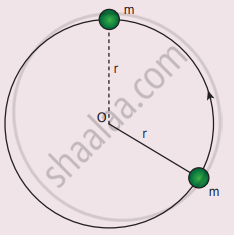Advertisements
Advertisements
प्रश्न
What are the three basic sources of generating power?
उत्तर
The three basic sources of generating power are thermal, hydro-electric, and nuclear power. The thermal power uses heat energy as its base for the production of electricity. Hydro-electric power involves production of electricity through the use of kineticforce of falling water. And the nuclear power involves the use of sustained nuclear fission to generate electricity.
The thermal sources, hydro-electric sources and nuclear power accounts for 70%, 28% and 2% of the power generation capacity respectively in India.
APPEARS IN
संबंधित प्रश्न
What is the significance of energy? Differentiate between commercial and non-commercial sources of energy.
What do you mean by transmission and distribution losses? How can they be reduced?
What are the various non-commercial sources of energy?
Discuss the reforms which have been initiated recently to meet the energy crisis in India.
A uniform force of `(2hati + hatj)` N acts on a particle of mass 1 kg. The particle displaces from position `(3hatj + hatk)` m to `(5hati + 3hatj)` m. The work done by the force on the particle is ______
A ball of mass 1 kg and another of mass 2 kg are dropped from a tall building whose height is 80 m. After, a fall of 40 m each towards Earth, their respective kinetic energies will be in the ratio of ______
An engine pumps water continuously through a hose. Water leaves the hose with a velocity v and m is the mass per unit length of the water of the jet. What is the rate at which kinetic energy is imparted to water?.
A body of mass 4 m is lying in xy-plane at rest. It suddenly explodes into three pieces. Two pieces each of mass m move perpendicular to each other with equal speed v. The total kinetic energy generated due to explosion is ______
Define the following:
loss of kinetic energy in an inelastic collision.
A bob of mass m is attached to one end of the rod of negligible mass and length r, the other end of which is pivoted freely at a fixed center O as shown in the figure. What initial speed must be given to the object to reach the top of the circle? (Hint: Use law of conservation of energy). Is this speed less or greater than the speed obtained in section 4.2.9?

What percent of rural households use bio-fuels for cooking?
Which of the following has the largest source of power in India?
From which of the following sources of generation do we get the largest amount of power?
Compact fluorescent lamp (CFL) consumes ______ percent less power than ordinary bulb?
______ is the energy which is available to the users at some price.
What are the basic sources of generating power?
How transmission and distribution losses can be reduced?
The ______ is usually instituted via law and is typically applied to necessary goods like food, rent, and energy sources in order to ensure that everyone has access to them.
